DAO, "Decentralized Autonomous Organization" is a new way of establishing companies, organizations, or community projects based on Smart Contracts and tokens.
In this note, we explain it in the simplest way you can imagine.
DAO: Decentralized Autonomous Organization
The future is today. Yes, we know it’s a cliché, but it’s more real and tangible than ever. Changes are happening at an accelerated pace, and we must stay aware. We cannot stay on the sidelines simply because blockchain innovation is here to stay and settle.
At Oxean Cross, through Epical, a company of our Group, we disseminate and provide knowledge so that organizations begin to incorporate these new ways of doing and growing in this new digital and virtual world.
NFT (Non-Fungible Tokens), cryptocurrencies, web 3, and DAO are part of Blockchain technology.

What are the DAOs?
They are Decentralized and Autonomous Organizations. They are a new form of organization based on blockchain technology that has several characteristics:
- They allow companies and organizations to be established without hierarchies in their governance.
- They are based on Smart Contracts under an unalterable code and mostly run on the Ethereum blockchain.
- They are community self-managed. Each user generates tokens and democratically selects decision makers.
- They are open. Any user can decide to invest in a DAO and start participating and earning money.
- They have clear objectives and planning and can establish clear projects to achieve.
The emergence of DAOs
Bitcoin was the first DAO that began to function as such: autonomously from conventional financial systems with its own code, i.e., a set of pre-programmed rules, and coordinated through a distributed consensus protocol.
But, who makes it possible for DAOs to reach the public through smart contracts is Ethereum.

The DAO came out with a bang in April 2016. Ethereum launched the DAOs through a successful crowdfunding campaign selling the $DAO token. It raised a total of 11.5 million ETH, which at the time, was equivalent to $150 million.
But, it was short-lived. There were serious security issues with the code and in June of that year, the organization was the victim of a hack that managed to drain the equivalent of $50 million from its “vault.”
At the time, it was a major shake-up for Ethereum, which was able to pull itself together, and the mistakes were capitalized towards the design of the Smart Contracts codes.
The network was split into what we know today as ETH, while the original blockchain version was renamed ETC (Ethereum Classic).
Let's see how they work
The backbone of a DAO is its smart contract which contains the rules defined for its operation. It is a computer program that exists autonomously on the Internet. This set of rules makes it possible to program actions and determine that they are executed under certain parameters. By this, the DAO gains the ability to perform actions autonomously.
In addition, this contract acts as a guarantee and security for the group finances that make up the DAO.
On the other hand, a protocol is established to guarantee that decisions are made by consensus of all parties. In other words, nothing or no one outside the network can alter or cause them to make decisions.
In addition, the DAO needs to support itself financially. To this end, an exchange mechanism works through tokens.
Finally, all the information is recorded and stored in the blockchain to be accessed publicly and guarantee its security.
Decision-making
By consensus. Each of the DAO’s decisions is determined through a majority vote. From where and how to spend the funds to plan to achieve the goals set. Everyone who has purchased a share can make proposals about its future.
These proposals are submitted to a vote, and they will only be acted upon if the majority agrees.
DAOs allow people to exchange their funds with anyone in the world, as with bitcoin. Thus, it can be done in the form of an investment, a donation, money-raising, or loans, without intermediaries.
DAO example
A few years ago, a group of Americans established what they called: the ConstitutionDAO. Their goal was to acquire the last original copy of the U.S. Constitution, at the time, in private hands.

It was the largest crowdfunding case in the purchase of a physical object: through an auction at Sotheby’s, they managed to raise more than 48 million dollars in just a couple of days.
Though the DAO failed in buying the Constitution, it served to show the impact that this new form of organization can have.
Advantages and disadvantages
They are often generated within a movement at the digital level but with real-life implications. A Telegram channel, a Twitter account, or a Discord server can be the starting point when creating a new DAO.
Among the advantages of forming a DAO are:
- Create organizations without hierarchies. Everyone can contribute ideas and vote, making this a decentralized organization.
- Decentralization allows DAOs to offer services globally, eliminating borders and democratizing access to services that would otherwise not be available to all.
- It facilitates the creation of organizations, away from bureaucracies, saving time and money.
- A very high level of transparency is gained through blockchain technology and its ability to access the operating code and record all actions performed while keeping the records public.
Meanwhile, among the disadvantages:
- Because of the complexity, specialists and programmers need to be involved.
- Since blockchain technology and cryptocurrencies are not yet regulated in several countries, their implementation can be complicated.
If you are passionate about the subject, we suggest you deepen your knowledge by reading The Ultimate Beginners Guide.
Do you have questions?
your internal and institutional communication.
You can also contact us :




